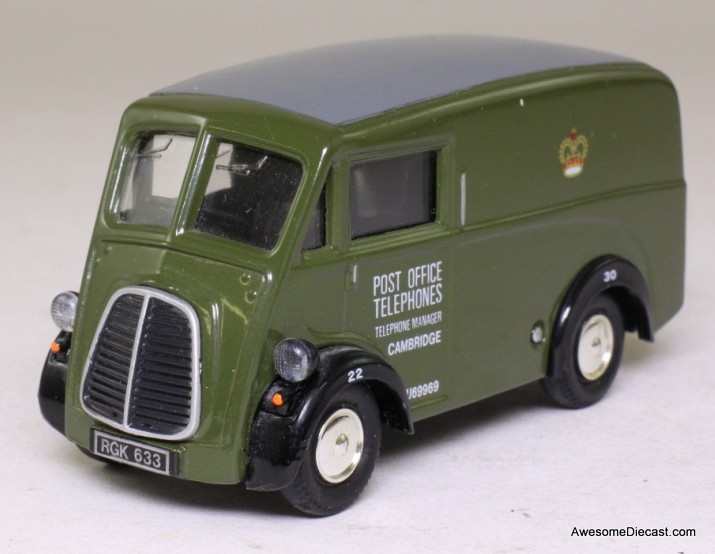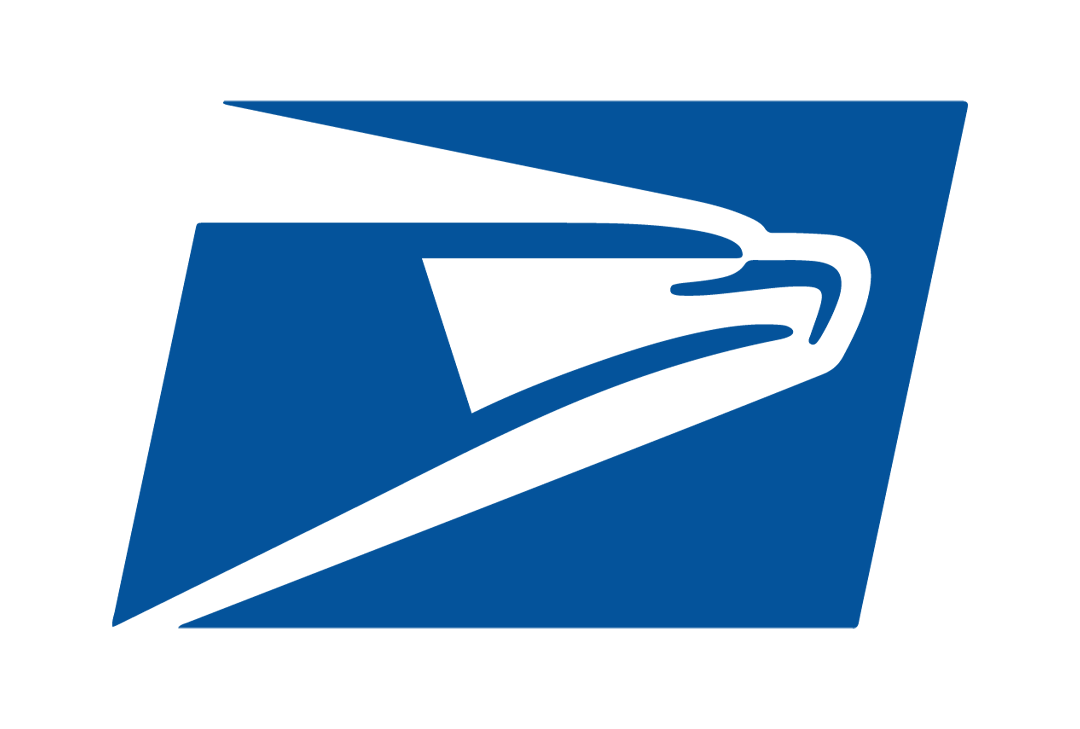
Corgi 1:43 Morris J Van 'Post Office Telephones'
$29.95
Diecast metal with plastic parts
The Morris Commercial J-type is a 10 cwt (0.5 ton) van launched by Morris Commercial in 1949 and produced until 1961. After the formation of the British Motor Corporation in 1952, by the merger of Morris' parent company, the Nuffield Organisation, and Austin, the Commercial name was dropped and the van was marketed as the Morris J-type.
The van followed the emerging trend of having forward controls and sliding doors on each side. It was made in both left and right hand drive versions. As well as complete vehicles, the J-type was also supplied in chassis form to external body makers and it appeared, amongst other uses, as a pick-up, tipper truck, ice cream van and milk float. Many were bought by the British Post Office and these differed from standard in having rubber front and rear wings.
The J type is fitted with a 1476 cc four-cylinder side-valve engine based on the one used in the contemporary Morris Oxford MO car. Drive to the rear wheels is through a three-speed gearbox and initially a spiral bevel type rear axle, later replaced by a hypoid type.
The van was updated to the JB in 1957 when an overhead valve 1489 cc, BMC B-Series engine was fitted along with a four-speed gearbox.
An Austin version of the van appeared in 1957 known as the Austin 101 and differed from the Morris only in badging and radiator grille styling.
Production ceased early in 1961 after over 48,600 had been made. It was replaced by the Morris J4
Post Office Telecommunications was set up as a separate department of the UK Post Office, in October 1969. The Post Office Act of that year was passed to provide for greater efficiency in post and telephone services; rather than run a range of services, each organisation would be able to focus on their respective service, with dedicated management. By law, the Post Office had the exclusive right to operate the UK national telecom network, (this statement does not reference the completely separate and wholly owned network operated by Kingston Communications in Hull since 1914, and limited ability to license other providers' services and equipment.
The 1970s was a period of great expansion for the Post Office. Most exchanges were modernised and expanded, and many services, such as STD and international dialling were extended. By the early 1970s, subscribers in most cities could dial direct to Western Europe, the US, and Canada; by the end of the decade, most of the world could be dialled direct. The System X digital switching platform was developed, and the first digital exchanges began to be installed. The Post Office also procured their own fleet of vans, based on the Commer FC model. However, progress came at a price. Investment was stifled by public spending limits, and long waiting lists for telephone lines developed, sometimes for years.
In 1979 the Conservatives decided that telecommunications should be fully separated from the Post Office. By 1981, the British Telecommunications Act was passed and the service became British Telecom in October that year.








